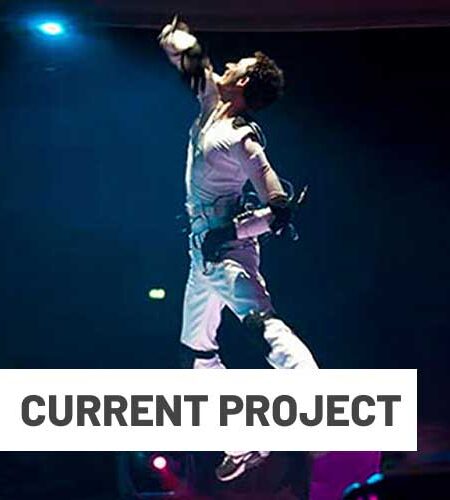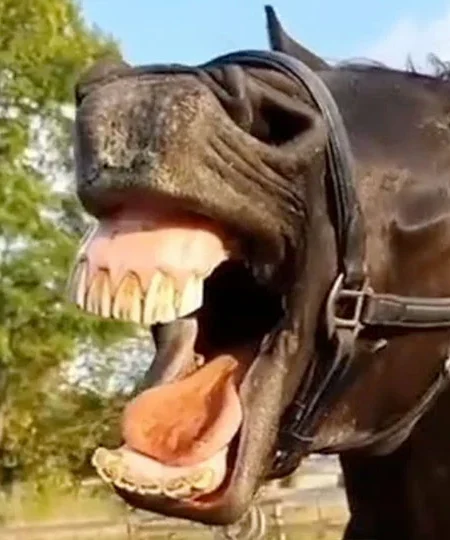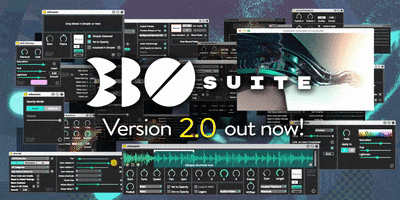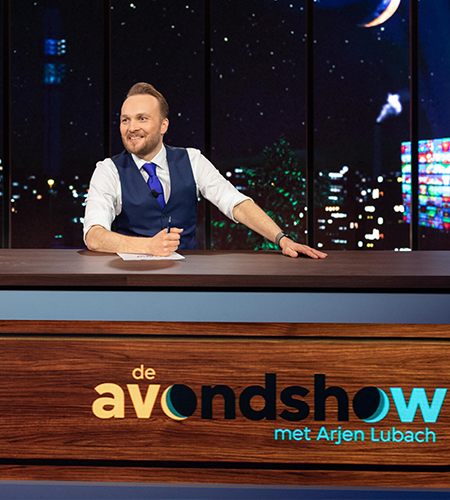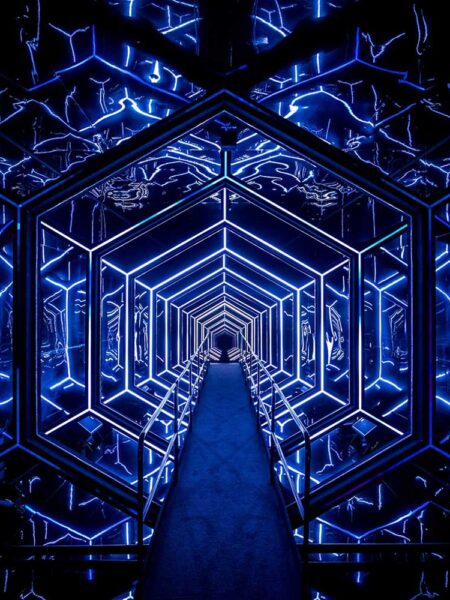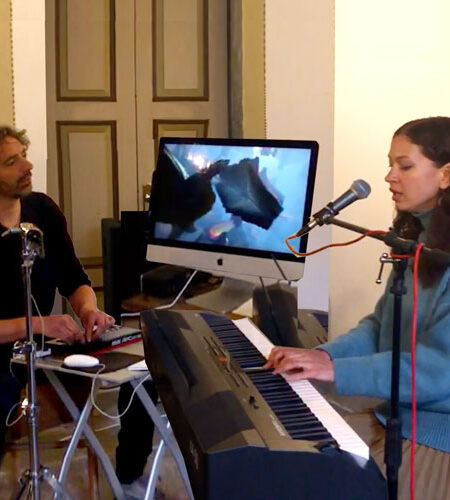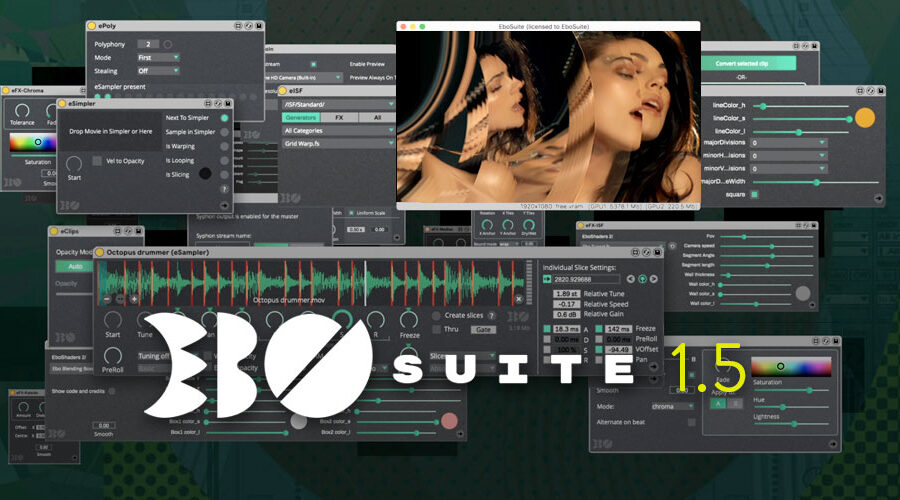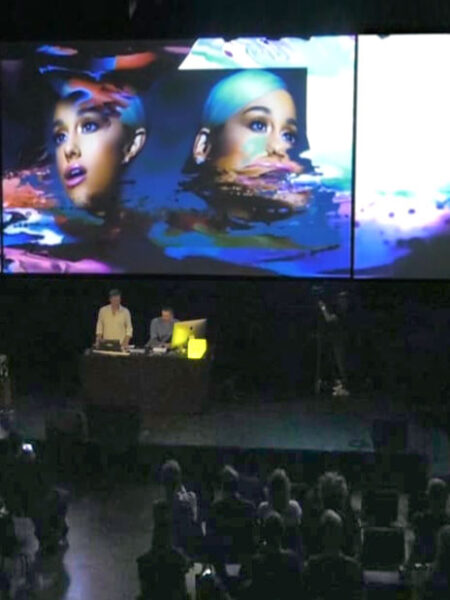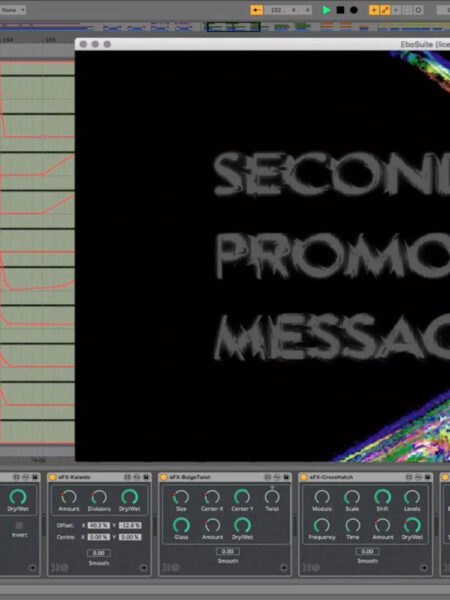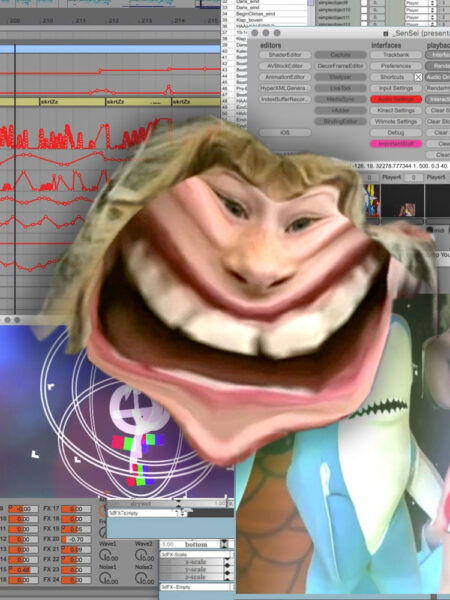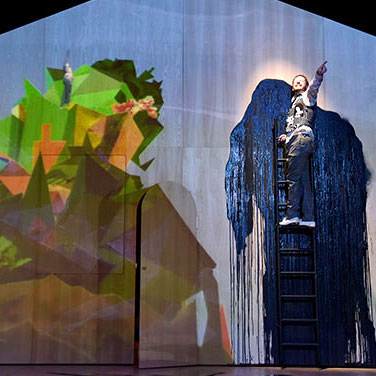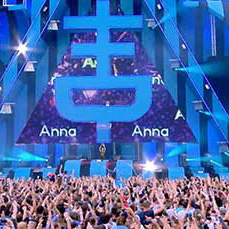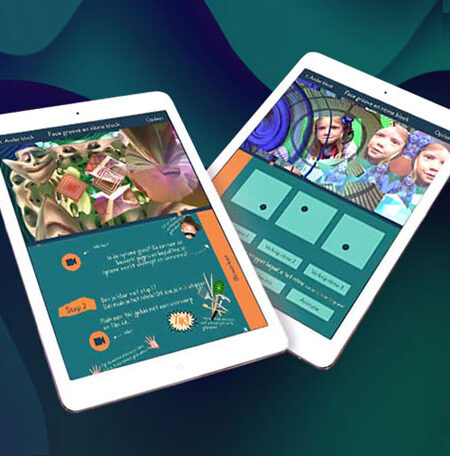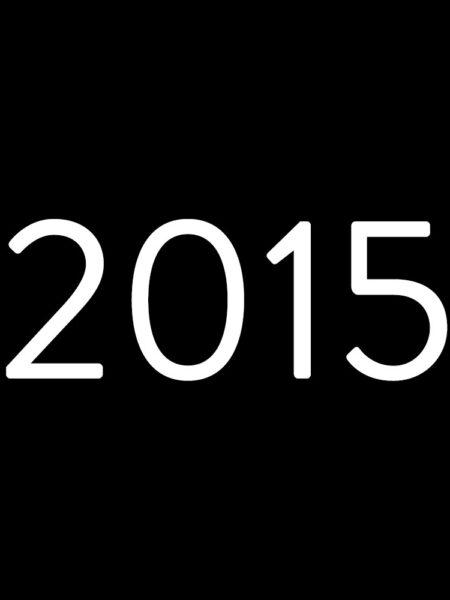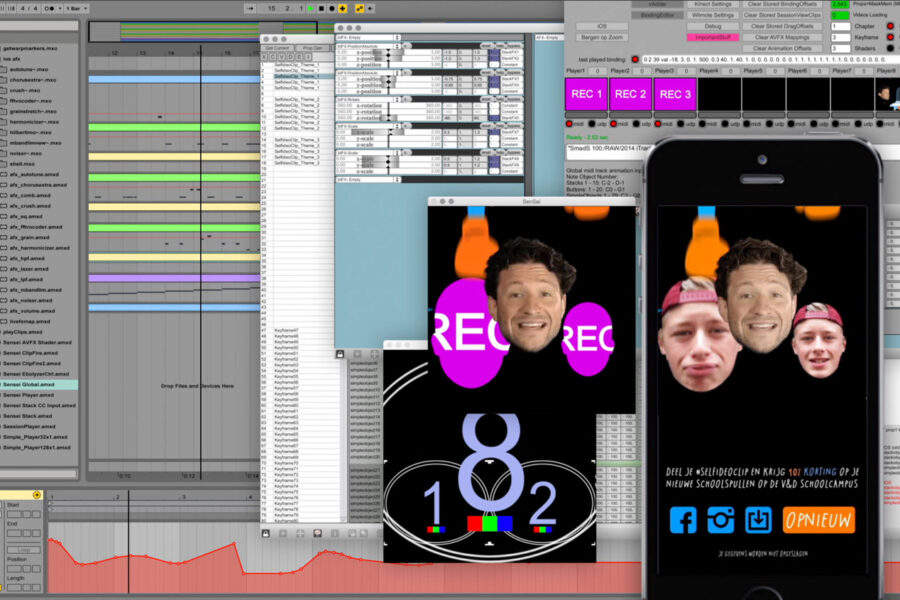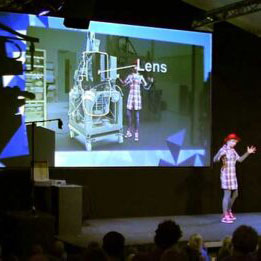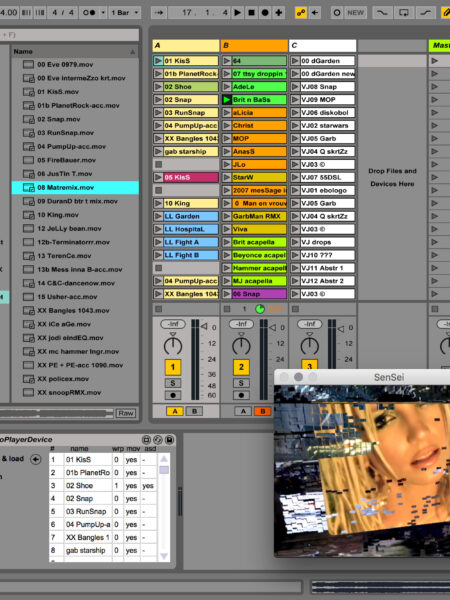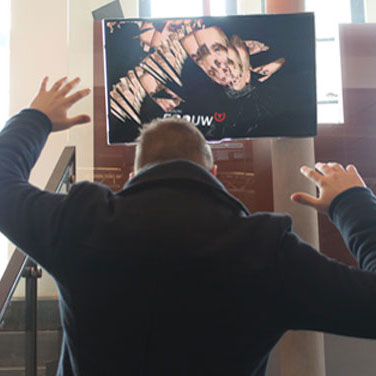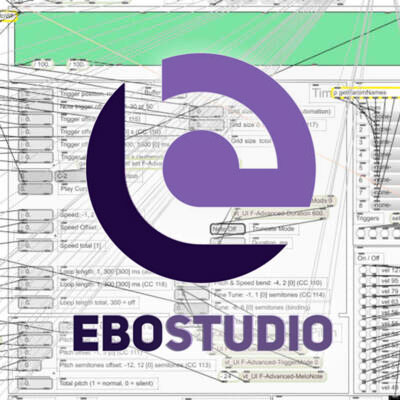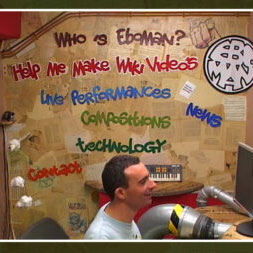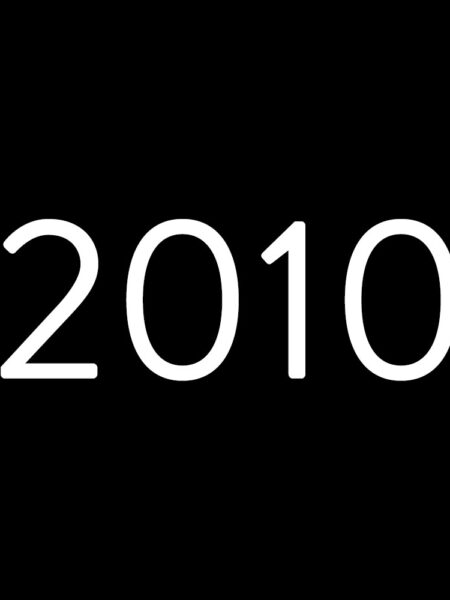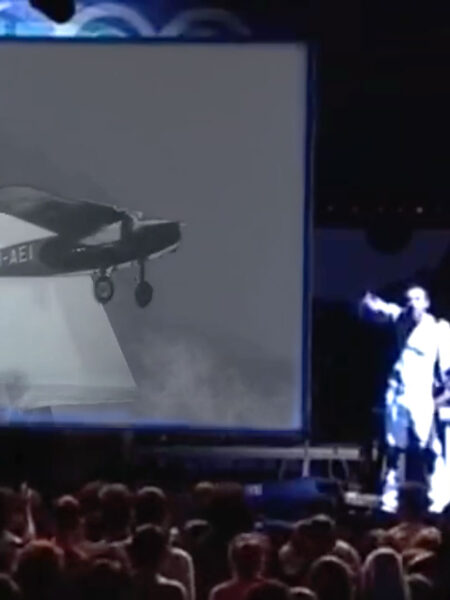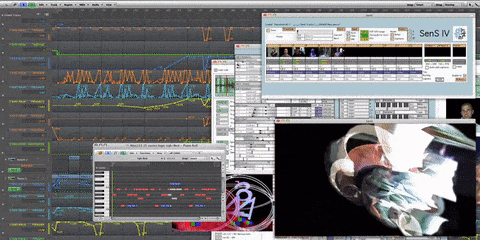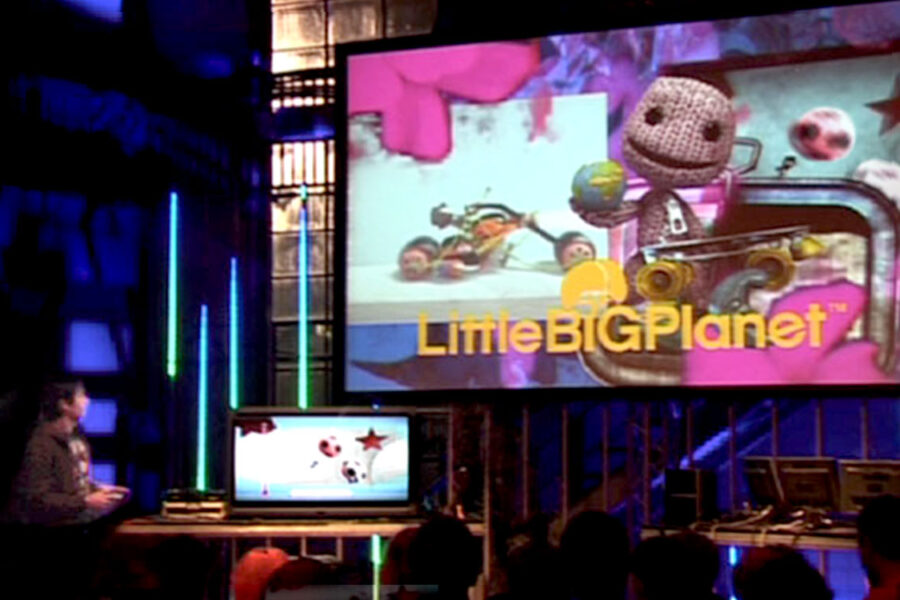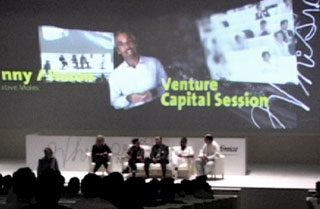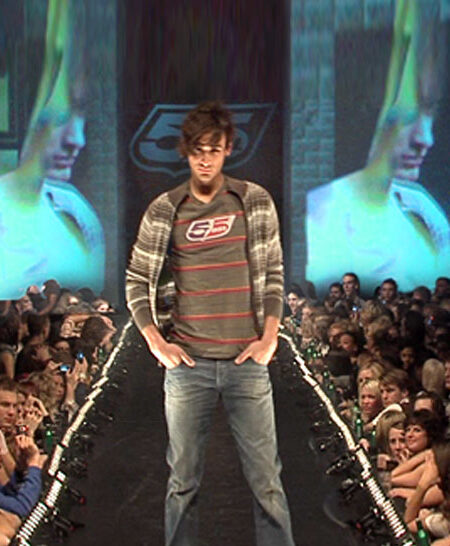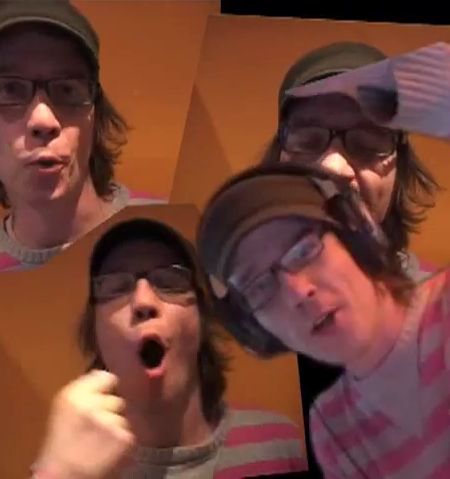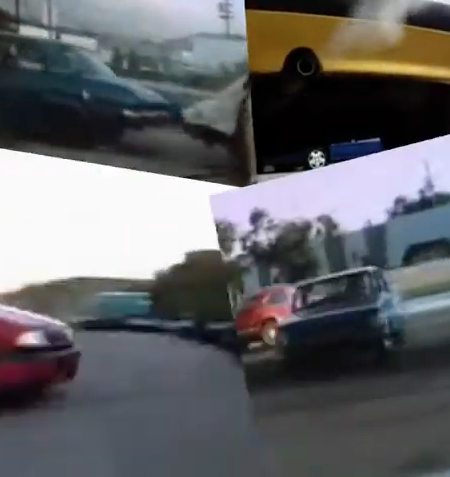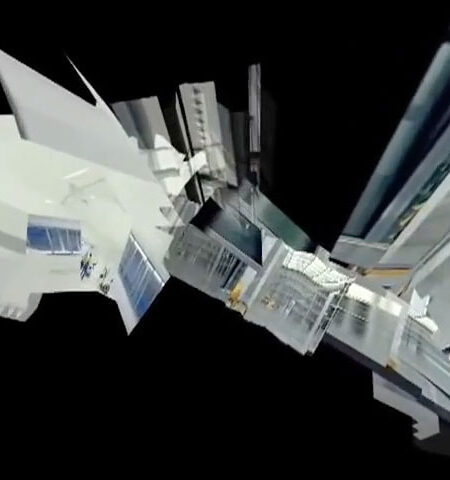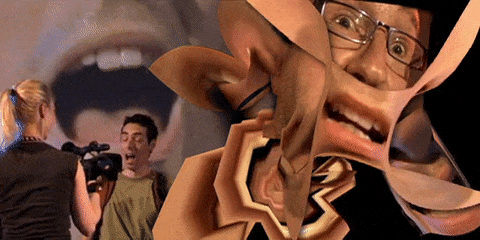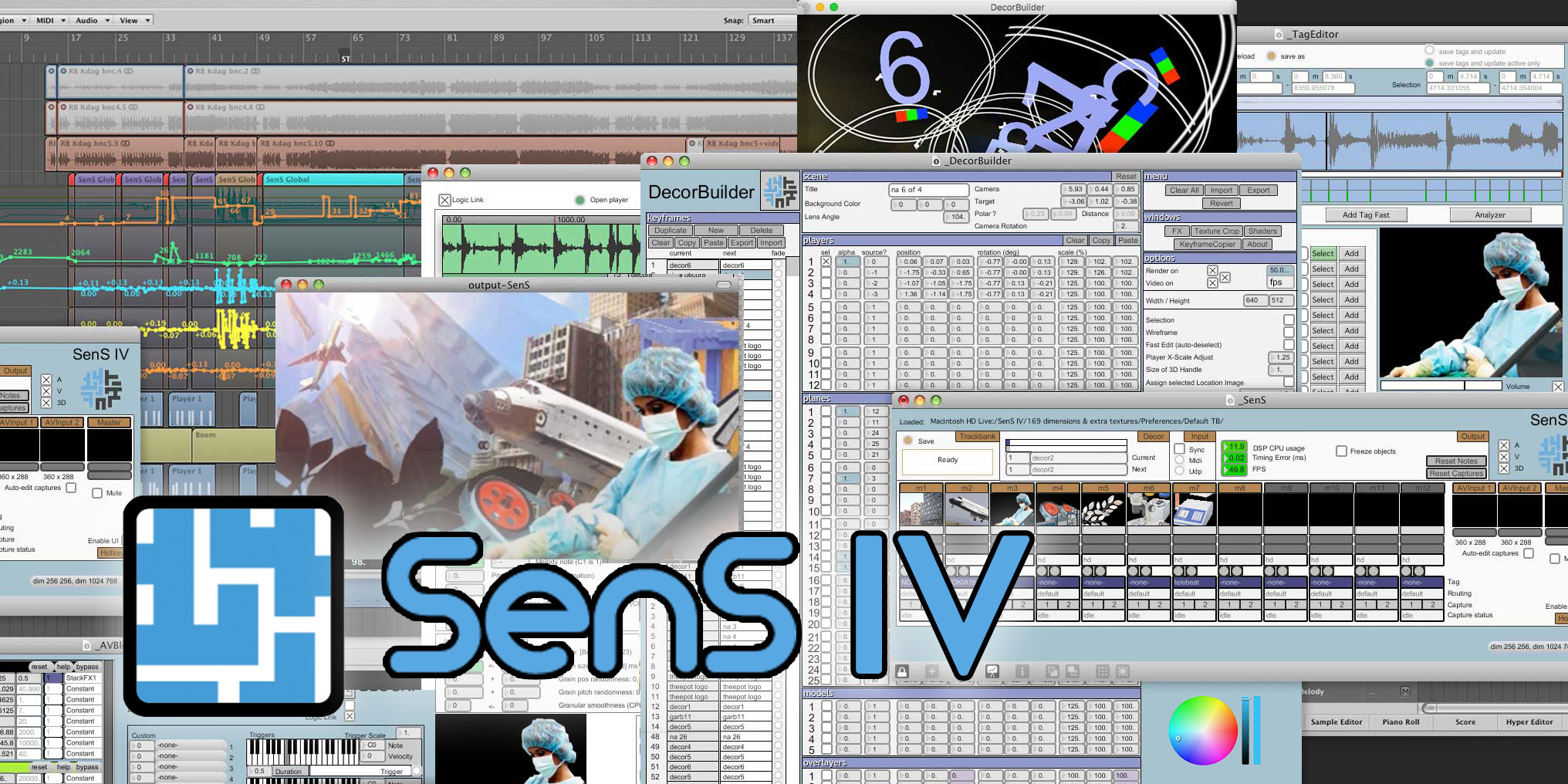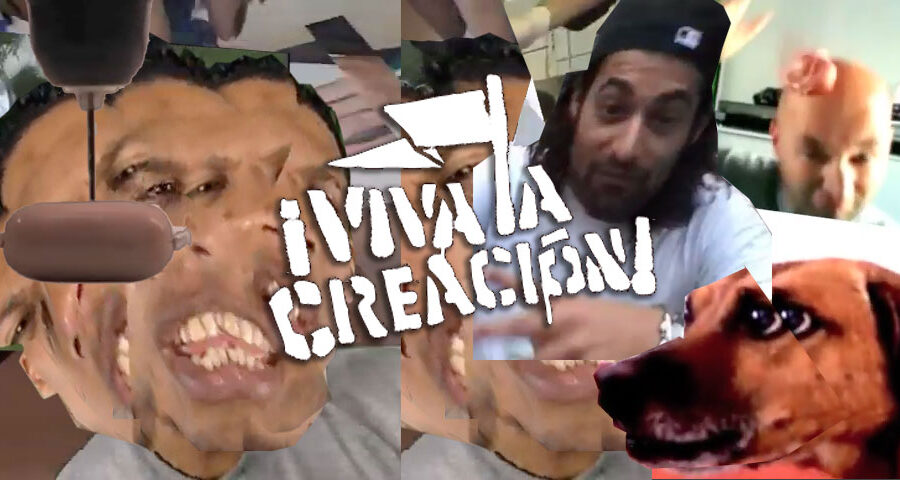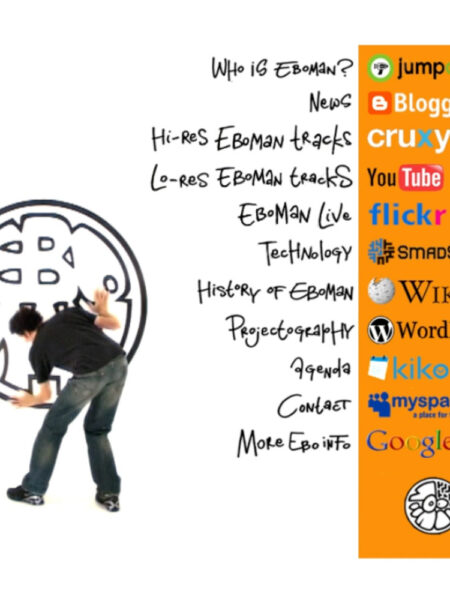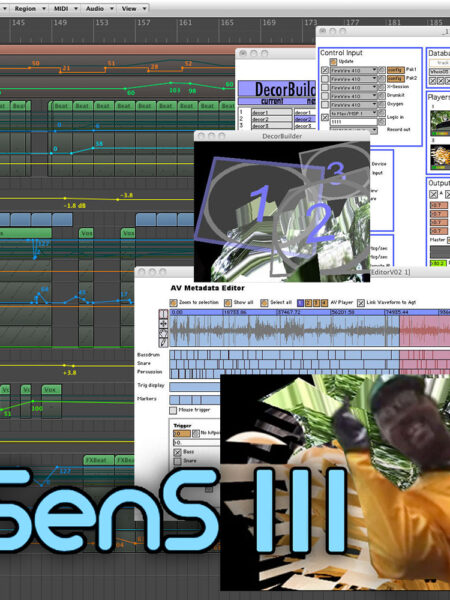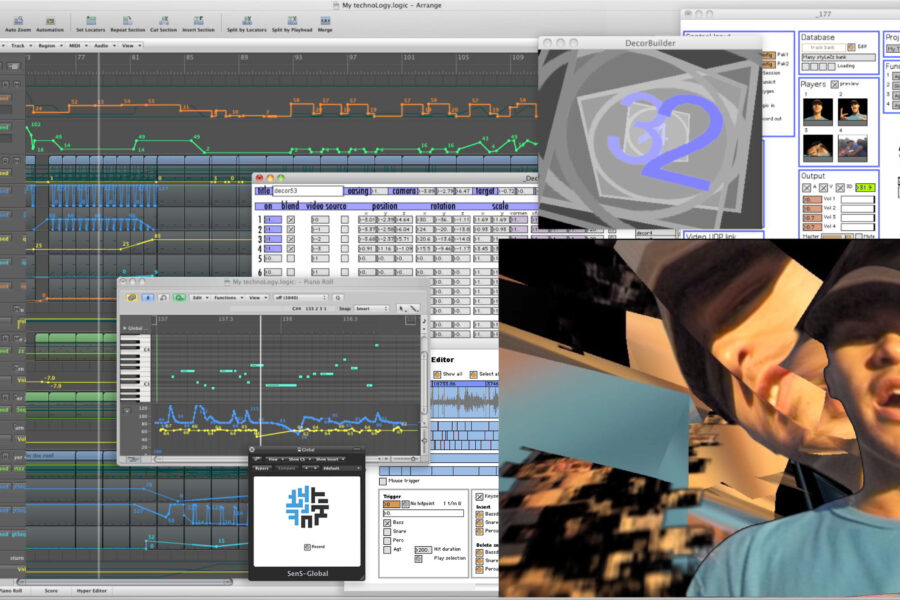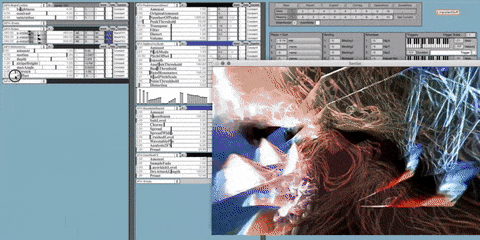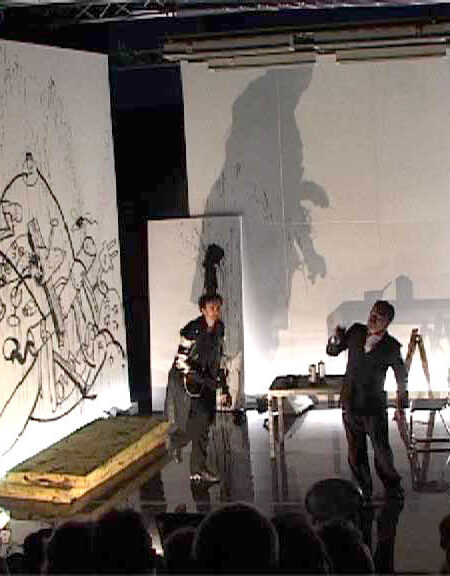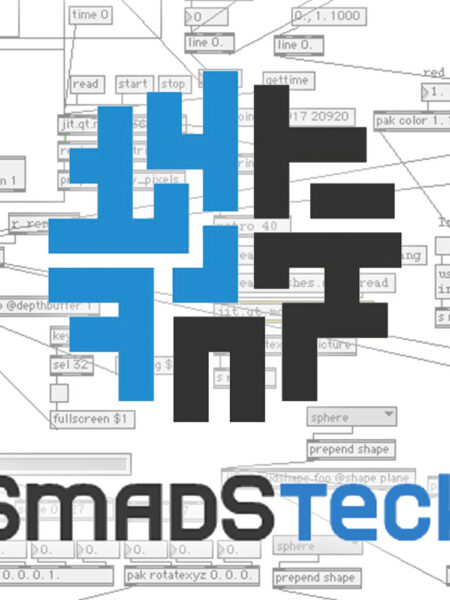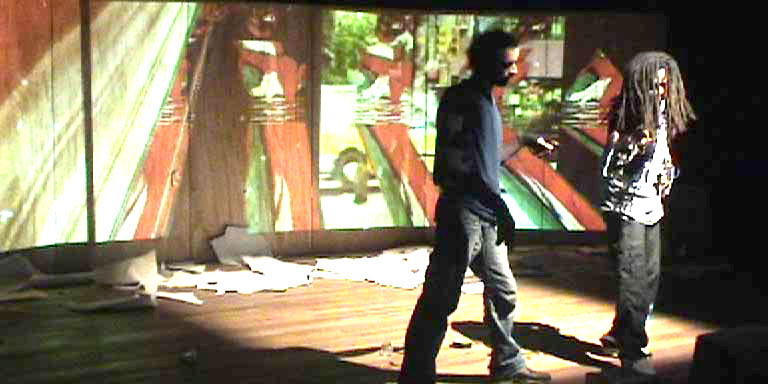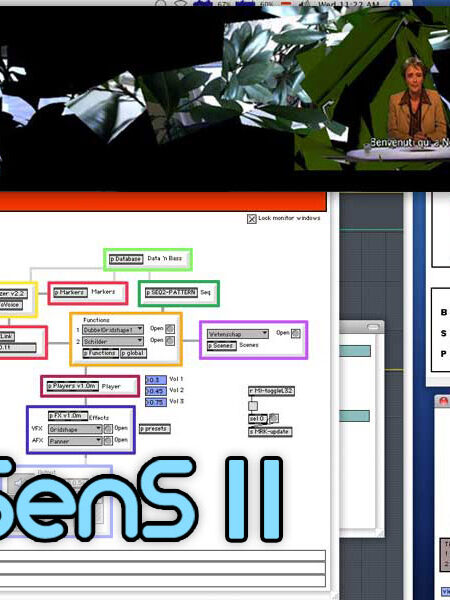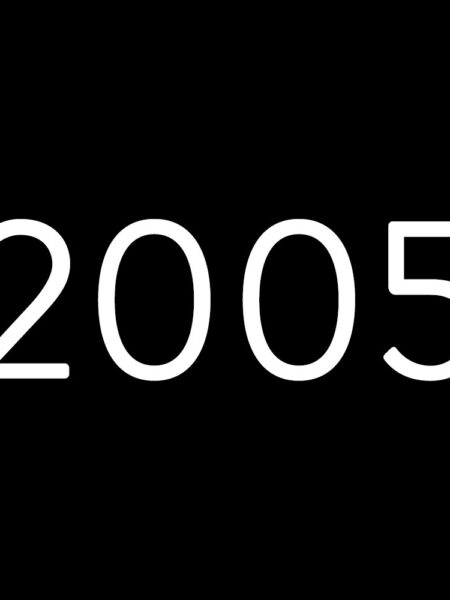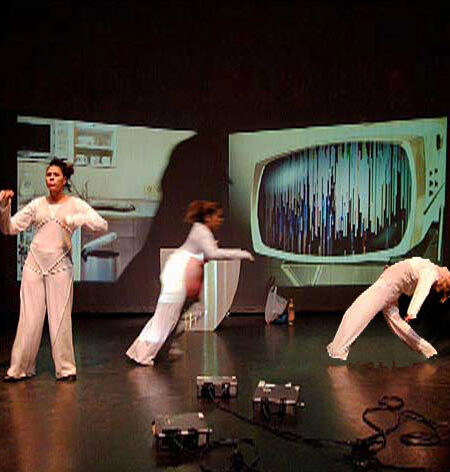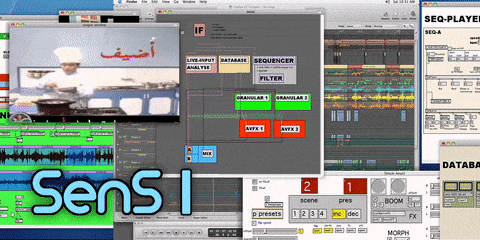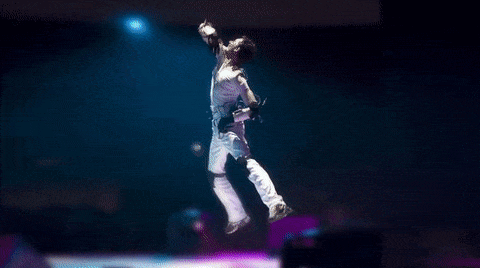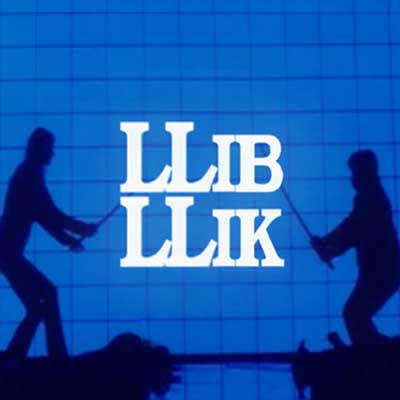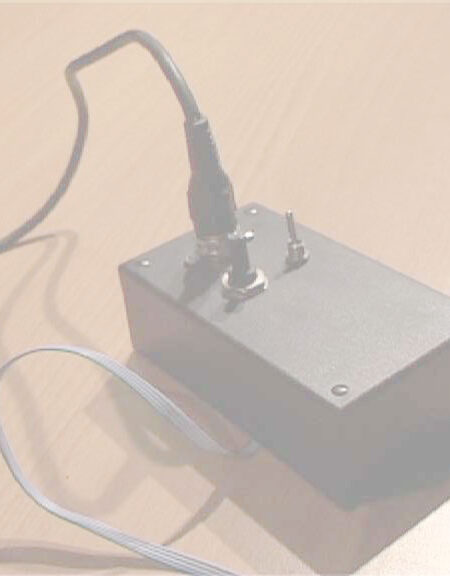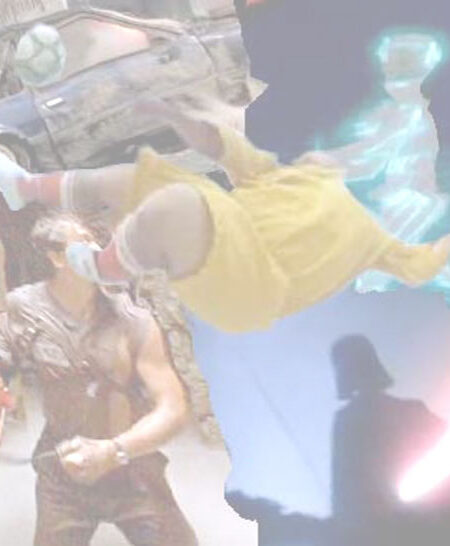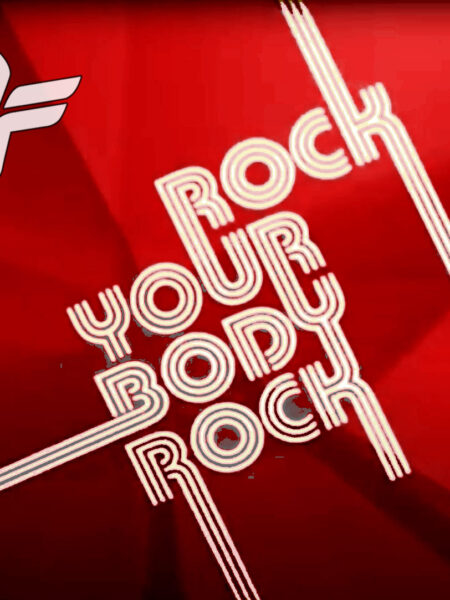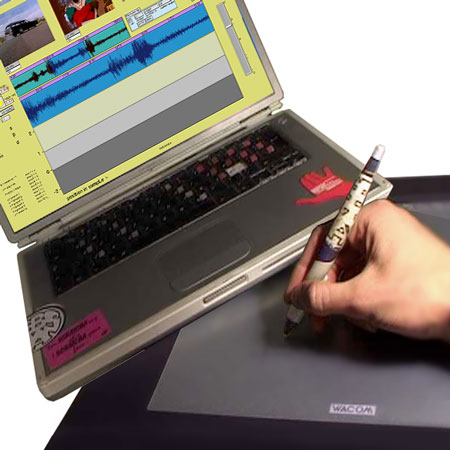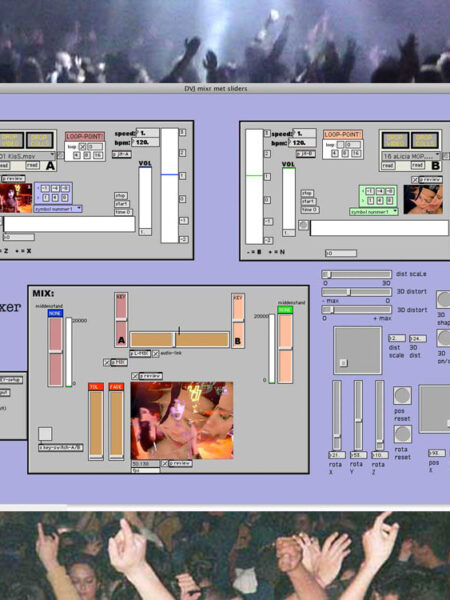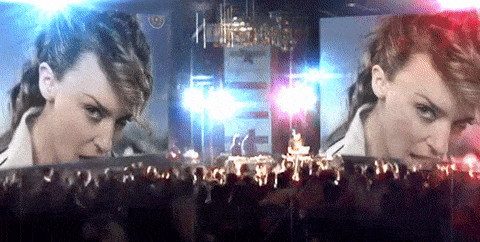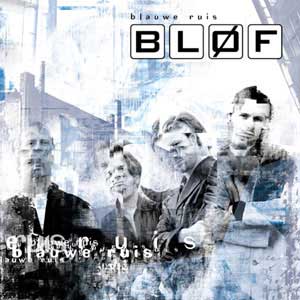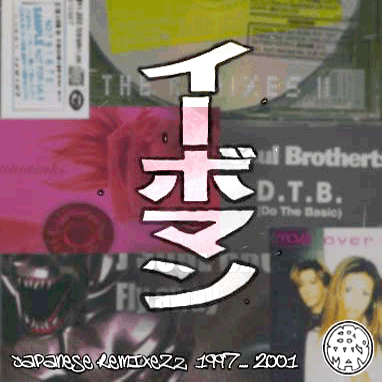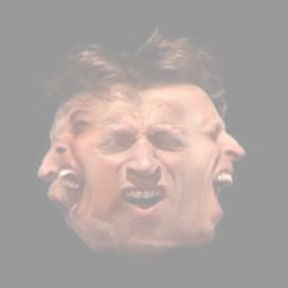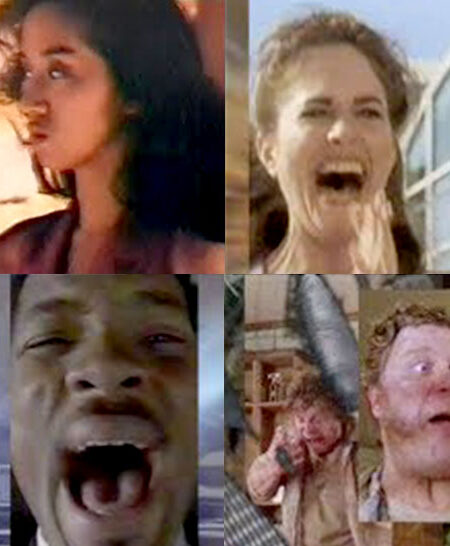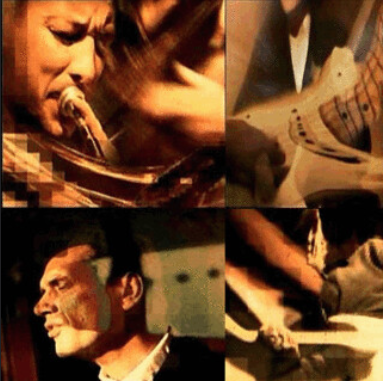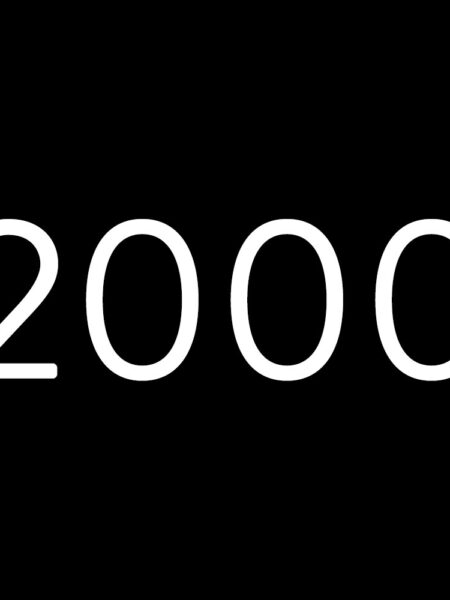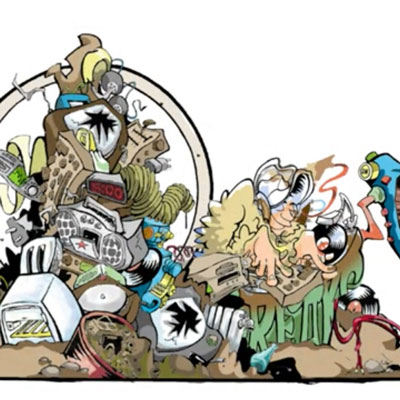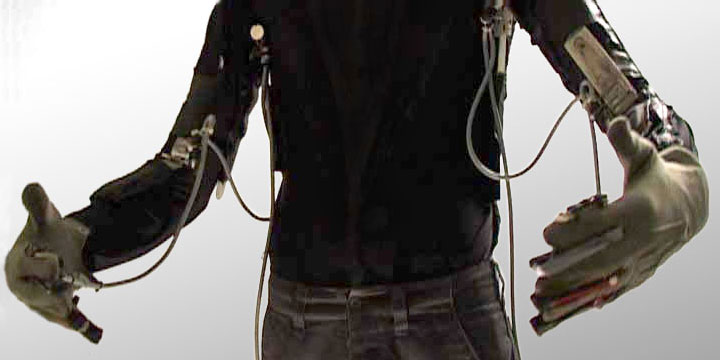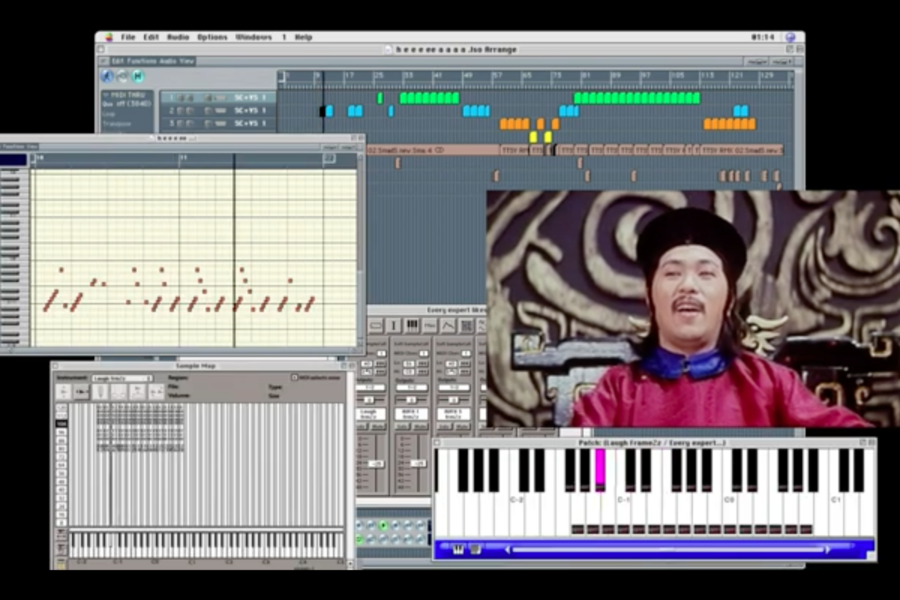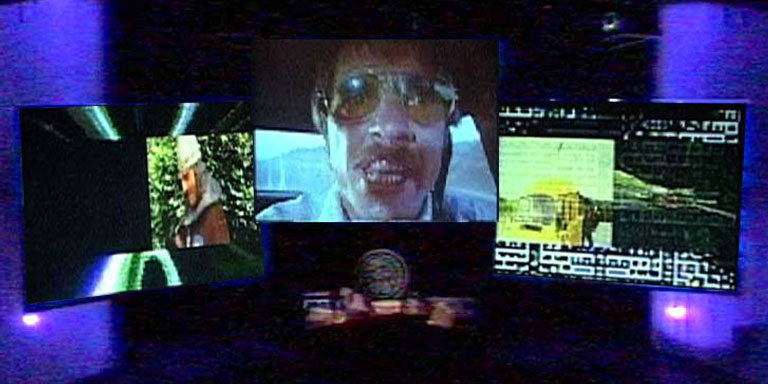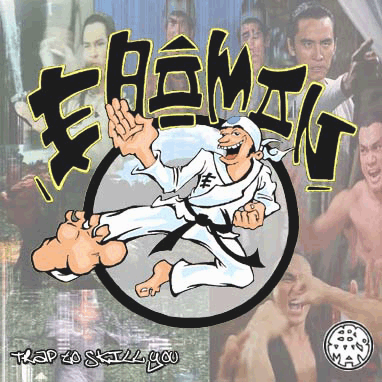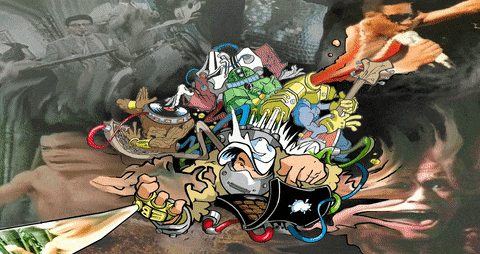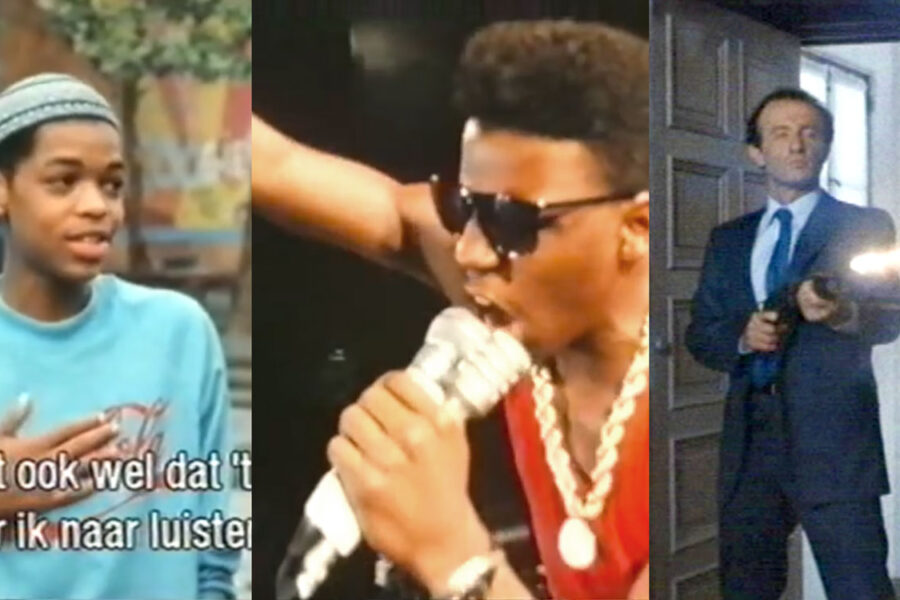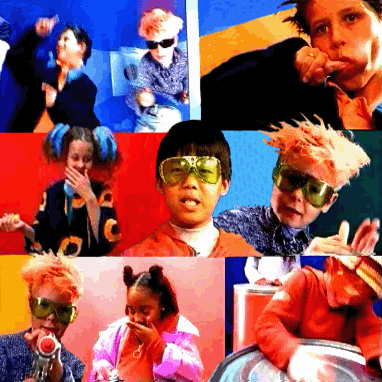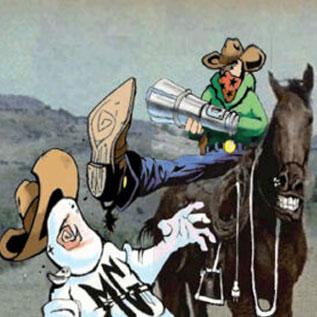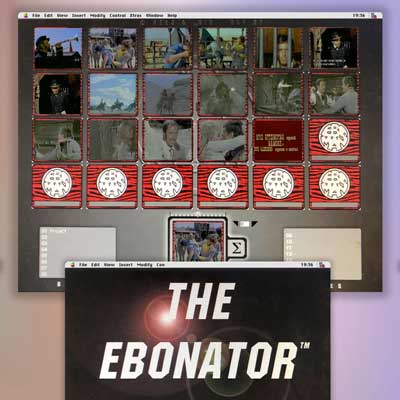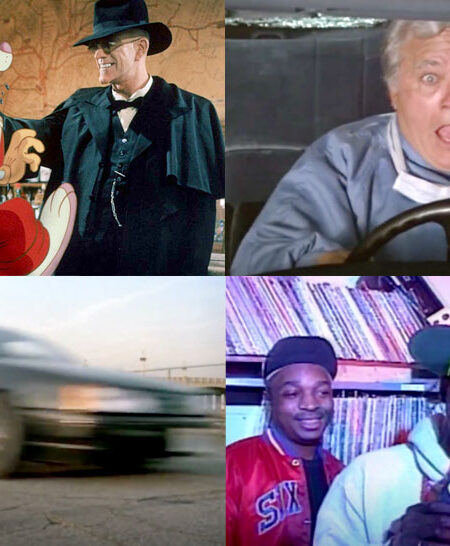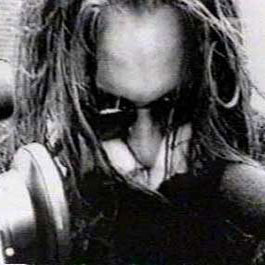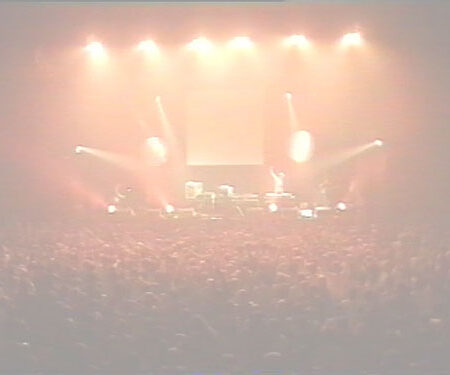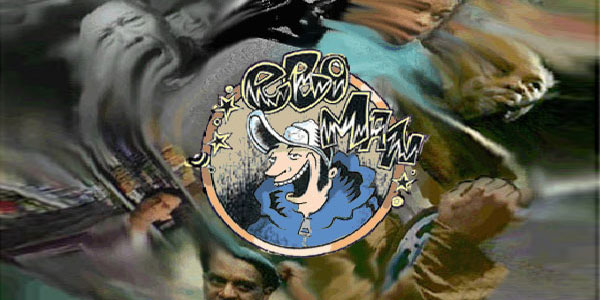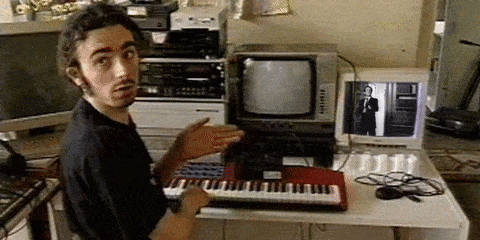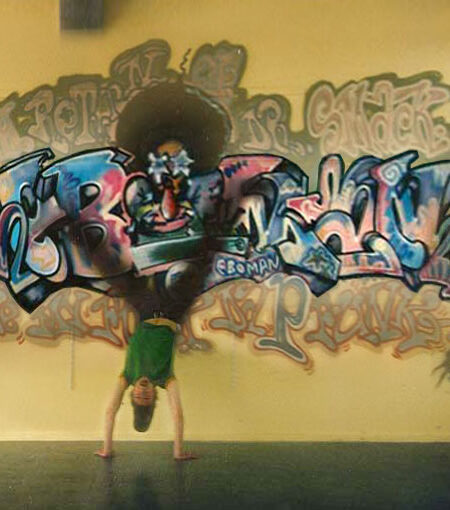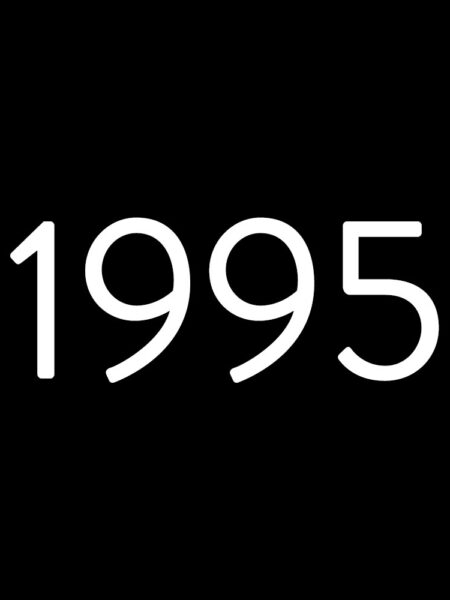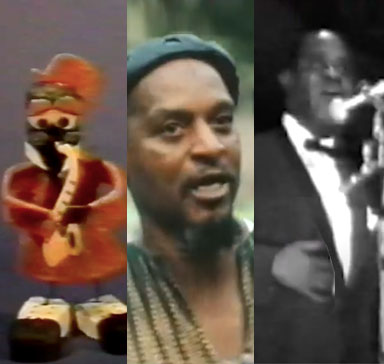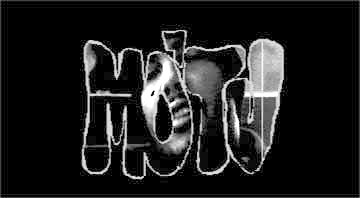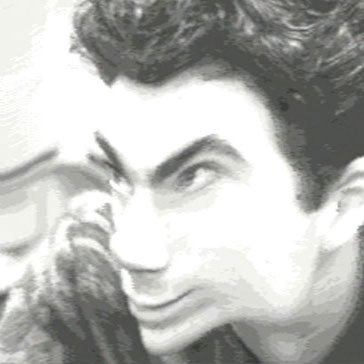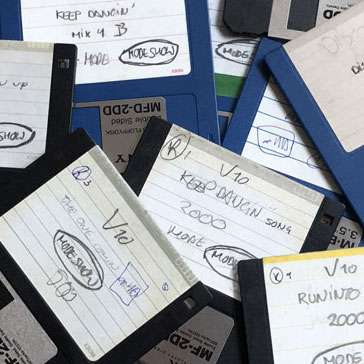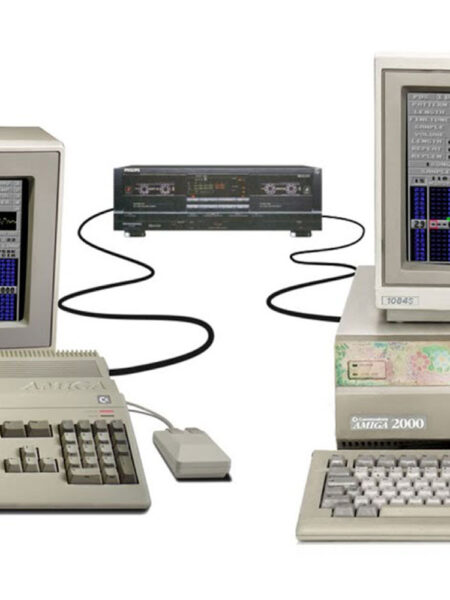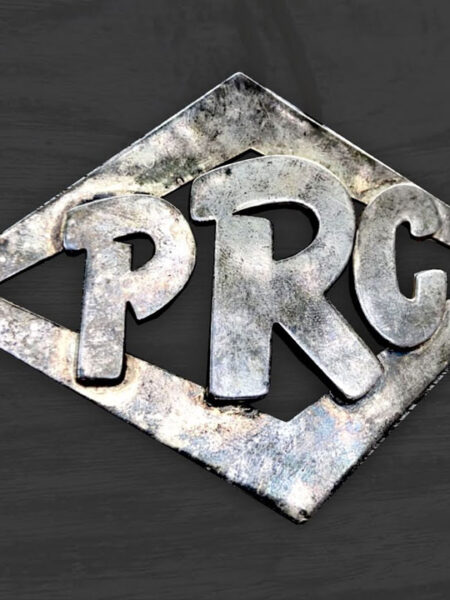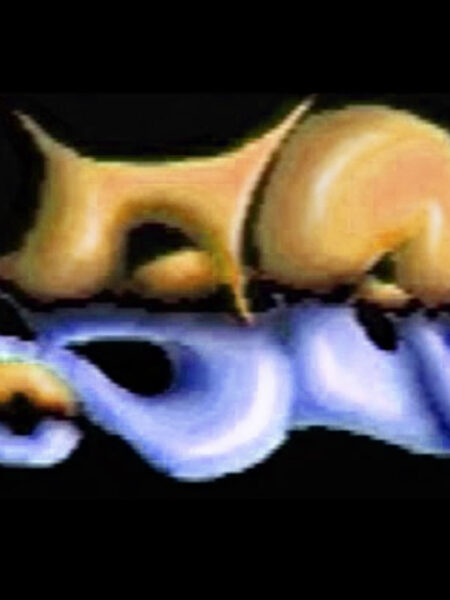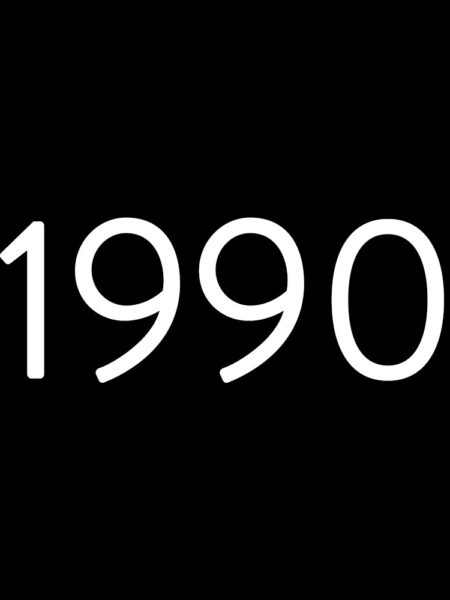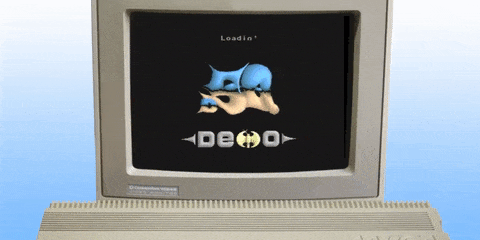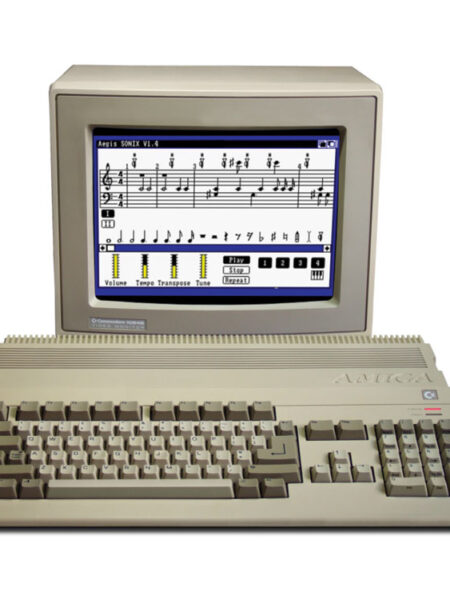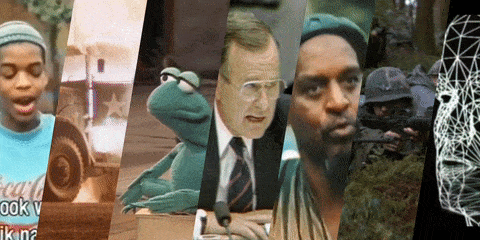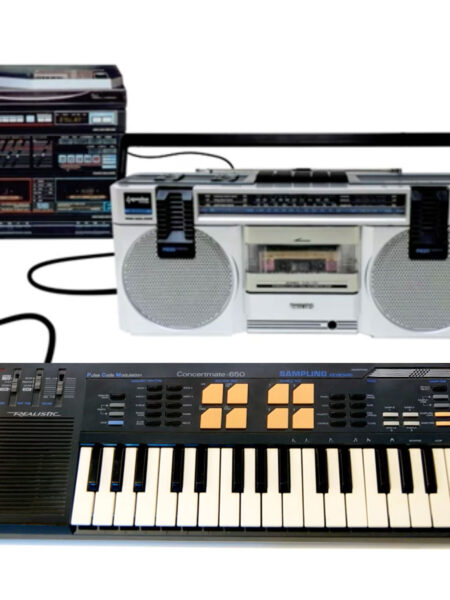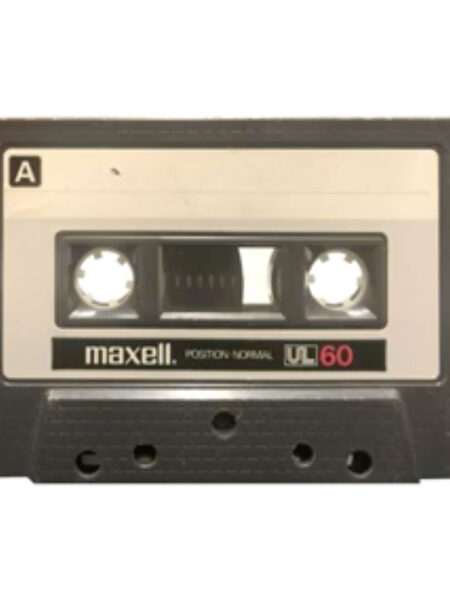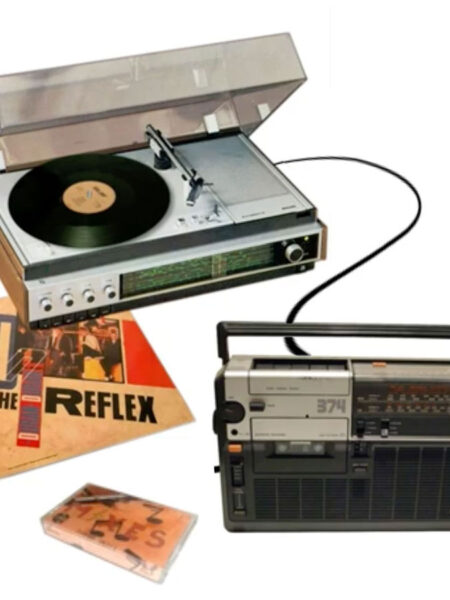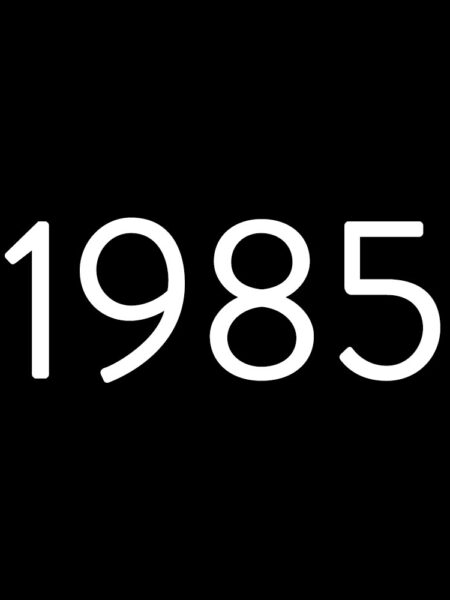This page presents a curated selection of my audio-visual work, organized by artistic and technical concepts. Because software to work with music and visuals at the same time doesn’t exist, I create it myself since 1995. Since 2003 I use my own software exclusively to produce my work. Additional works can be found on the project pages.
Eboman in 12 compositions
The twelve videos below give an impression of my work: (1) EboSuite, (2) the Interactive Tracks concept, (3) the Augmented Stage concept, (4) the live video sample concept, (5) the Webby Award winning composition ‘Like diSs‘ made with SenS IV, (6) the SenSorSuit 2.0 and video drumkit (7) a DVJ remix of Alicia Keys. (8) the SenSorSuit I created in 1999. (9) Trap to skiLL you was supposed to be the lead single from my debut album, (10) GarbiTch shows the use of audio-visual effects in 1998, (11) Donuts with Buddha marked my break through as audio-visual artist in 1996, (12) Tragic eRRoR is the first audio-visual composition I made in 1988.
Creating my own audio-visual instrument
In my work music and visuals are one. I started creating my own audio-visual instruments in 1995, because software to work with music and visuals at the same time didn’t exist. This quest affected my work as an artist heavily, but resulted in a wonderful product: EboSuite. The videos below show (1) EboSuite, (2) SenSei, (3) SenS IV, (4) the Frame Drummer Pro, (5) the skrtZz set-up from 1998, (6) the home made video sampler from 1996.
Video sampling
I love video sampling. I offers a lot of artistic freedom and new ways to tell a story in a musical way. In the 90’s and early 2000’s it was the only way to use complex visuals, because hardware was not powerful enough to generate visuals or use audio-visual effects in real-time. The videos below show: (1) a DVJ mix with EboSuite, (2) a track made for a car insurance company, (3) track for my website 2.0 made with SenS III, (4) a track from my debut album, (5) a track made with my home-made video sampler, (6) an early composition from 1993.
Audio-visual effects
Audio-visual effects (AVFX) play an important role in my work. AVFX are effects that manipulate the image and sound of a video simultaneously. It is a great source of artistic expression and an interesting way to create completely new images and sounds. The videos below show: (1) EboSuite, (4) how I used SenS III to create a track (no all AVFX are created with SenS III, because of hardware limitations), (6) a scene from my dDriVer must be a MAdMaN movie.
Visual music
Audio-visual effects and visual music (the art of translating sounds or music into an analogous visual presentation) are very closely related. In my work these two art forms are merged into each other. The first video below shows how I used SenSei to create visual music in 2011.
3D video mix & real-time motion graphics
From 2007 until 2011, I invested a lot in the 3D video mix and ‘real-time motion graphics‘ software of my audio-visual instruments SenS IV and SenSei. With this software 12 video players can be mixed with each other and with many graphics, three live camera streams and 3D models and visual effects, in real time!
Augmented Stage
In 2011, I made the real-time motion graphics software of SenSei interactive to create Augmented Stage. An innovative way to control and be part of an audio-visual show. With Augmented Stage you can literally step into the audio-visual composition on the screen and interact with all visuals live. Walk around Michael Jackson, interrupt a TV show, be the drummer in a music video, jump between explosions, move objects, throw away a logo, etcetera, … the possibilities are limitless! Your art is your interface.
Live video sampling
I have been using live recordings of the audience in my live shows since 2004. Combined with the SenSorSuit this concept was a great success. I did many live video sampling shows on a very diverse range of stages. The first video below shows how I used SenS IV during a performance.
DVJ
I started performing as a DVJ in 1999 and created my own DVJ mixer in 2002. I have done many DVJ shows since then. To create the DVJ tracks I experiment with many audio-visual composition techniques. I use fragments from kitch pop culture to create hardcore creative audio-visual dance tracks. The compositions below are partly created with my SenSorSuit.
SenSorSuit
In 1999 I created my first SenSorSuit with door hinges and parts of a DJ mixer. With this motion tracking suit I was able to control my shows in a more natural way and interact with my audience better. In 2004 I created the SenSorSuit 2.0 using flex sensors and touch sensitive sensors. The first video shows the software I used for my first SenSorSuit.
Adventures in baSs
In 2000, 2001 and 2002 I was searching for a new style of dance music, mixing the best of Drum and Bass and other forms of dance. The aim was to create hard dance music with a lot of digital mix trickery and a lot of bass. Some of these tracks I used for my DVJ 2.0 set.
Generative tracks
For musicians it is very normal that their software works in real-time and is optimised for a real-time workflow, to jam, play live with each other and try out ideas immediately. For visual artists this is very different. Visual editing and mix software is slow and the workflow is static. I am interested therefor in concepts to do video editing and manipulation in real-time. The videos below are the result of such experiments.
Remixes
Below a selection of music remixes I did. The first three videos are remixes for Japanese J-Pop artists. The forth and fifth are remixes for Birgit Schuurman from 2004. The last video is a remix for the Treble Spankers from 1996.
skrtZz
In 1998, I developed the skrtZz concept to work with video in a more creative, flexible and musical way. I also used the skrtZz concept to play with real-time audio-visual effects before hardware was powerful enough to do this live. This is concept is also great to create digital scratch music.
Commercial work
To fund the development of my technology I do many commercial projects, for brands like Nike, Telefonica, Heineken, ASML, 55DSL, Google, Nokia, ING, TMobile, Apple, Ray-Ban, Sony and G-Star. I always use my own audio-visual software and artistic video sampling, visual music style. The videos below show: (1) 55DSL fashion show, (2) promo for online video sampler, (3) live video sample installation, (4) Festival after movie installation, (5) opening for the Effie Awards, (6) compilation of real-time motion graphics.
Chaos funk
Between 1998 – 2000, I produced many Chaos Funk tracks. With Chaos Funk I tried to produce energetic, constantly changing, organic, seemingly spontaneous improvised compositions. The tracks should feel as if they were played live by a crazy band.
SmadS movies
In 1997 and 1999, I produced two Sample madnesS movies: Fort EboSuite goLd and dDriVer must be a MAdMaN. Both are experiments in video sampling, audio-visual effects, visual music and story telling.
Sample madnesS
I made a lot of music. In 1994 I called my style Sample madnesS. In 1996 and 1997 I released two E.P.’s called Sample madnesS pt.1 and Sample madnesS pt.2, which gained me a lot of success in the Netherlands and abroad. That opened a lot of doors for me.
Dos Amigas
In the summer of 1988, I got a Commodore Amiga computer. The Amiga was an extremely creative, versatile and powerful computer for it’s time. Great for making music and visuals. When I heard about it, I couldn’t sleep for two weeks and it still holds a special place in my heart. In 1990 I got a second Amiga. I used both Amigas, synchronised, to make more complex arrangements. With Runn into Jazz I scored a moderate club-hit.
AV Demos
In 1989 and 1990, I produced a few Amiga AV Demos with friends. I made the music and visuals and my friends made the software to play them as an audio-visual ‘slideshow’. One demo was used for five months to promote the Commodore Amiga in our local computer store.
Beginnings
The videos below show: (1) music for a fashion show, (2) music for our local hip hop posse, (3) music made with one Amiga, (4) music made with synthesiser software Sonix, my first DAW, (5) my first audio-visual composition made with my first sampler, (6) my first recorded compositions are so called ‘pause tapes‘ made with the turntable and cassette recorder of my parents.


